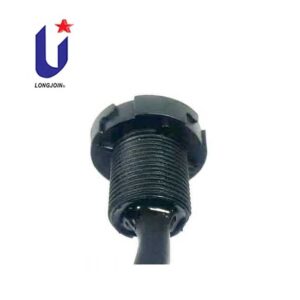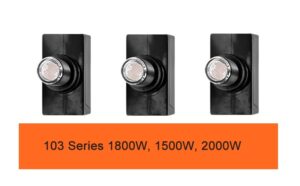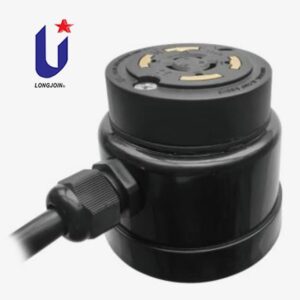From Crisis to Opportunity: How Long-Join Photocells Can Help Fix Chennai’s Streetlight Woes
Introduce
Chennai, India has a serious problem. Reports say almost half of the city’s 300,000 streetlights no longer work. So many dead lights leave streets dark and create big safety and security risks. It also shows a core failure in how lighting systems are designed, maintained, and built to last.
This article explores how adopting modular, smart photocell-based solutions from Long‑Join can transform a crisis into an upgrade opportunity — especially when applied to municipal street lighting networks.

What Exactly Is the Scale and Nature of Chennai’s Street-Light Crisis?
How deep is the infrastructure failure?
- City officials in Chennai did a quick check. They found that about 1.47 lakh LED street lights were put up in 2013. Those lights were under a seven-year maintenance deal. That contract has now ended.
- In one survey, the city found that over 41,000 streetlights were not working. Many of these bad lights were in key areas, including the central region.
- The equipment is old. The wiring is corroded. The infrastructure is in bad shape. The original makers — like Philips, Crompton, and Schreder— have mostly stopped doing maintenance because the cost is no longer worth it.
What kinds of problems do these figures point to? Here is a breakdown from a lighting-system perspective.
Problem Breakdown (From a Lighting System Perspective)
Key Issue | Description |
Equipment Aging | Lamps, drivers, wiring, poles and controls have exceeded their design life. |
Non-modular Systems | Many systems lack modular replacement parts, meaning full luminaire or pole replacement for even simple faults. |
Lack of Smart Controls | Absence of ambient light sensing, automation or remote monitoring increases manual workload and risk of neglected outages. |
High Maintenance Costs | Spare parts are scarce, wiring corrodes, poles rust; OEMs pull out, driving tender prices up. |
Why does this matter? Because municipalities like Chennai cannot afford to simply “wait until everything fails” or assume legacy systems will last indefinitely.
Why Would A Lighting-Control Device Like A Photocell Matter Here?
A photocell is a small control device. People also call it a photoelectric sensor. Some call it a light sensor photocell switch. It senses the light around it. Then it turns the lamp on or off to match, the way dusk-to-dawn control works. Using a reliable photocell in a street light lets it switch on and off by itself. This cuts energy waste. It also makes maintenance easier. It even helps with remote monitoring.
Why is that relevant for Chennai?
- Many failed streetlights still use simple timer switches. They depend on manual checks, not real ambient light sensors.
- Cities can install modern outdoor photocell lighting sensors. This lets them run their street lights in an automated, data-driven way.
- Each light has a smart photocell switch. It handles control, finds faults, logs energy, and powers system analytics.
How Can Long-Join’s Photocell Solutions Translate Into Practical Upgrade Paths For Chennai?
What does Long-Join offer and how does it address the municipal pain-points?
Modular, Hot-Pluggable Photocells for Fast, Low-Cost Maintenance
Model | Standard |
| Key Features |
JL-245CG | NEMA 7-Pin |
| Smart remote control, industrial surge protection, GPS integration. |
JL-243 | NEMA 5-Pin |
| Dusk-to-dawn sensing, light-degradation compensation, retrofit friendly. |
JL-ZHGA | Zhaga Book 18 |
| Compact for intelligent street-lamps, supports Zigbee/NB-IoT. |
All models support hot-swapping, meaning maintenance technicans can replace the photocell without powering down or fully dismantling the luminaire or pole. This dramatically reduces maintenance downtime and cost.

Smart Integration with City Systems
- It has a built-in light sensor. It turns on at dusk and shuts off at dawn all by itself.
- Control it remotely. Turn on, turn off, set timings online.
- Voltage surge, under/over-voltage protection to support grid reliability.
- Compatible with city platforms to report energy usage, fault alerts and location data in real time.
Addressing Municipal Pain-Points
Municipality Challenge | Long-Join Solution |
Lack of certification | All units come with UL / CE / CB / RoHS certifications. |
High retrofit costs | Use of standard interfaces + plug-and-play modules avoids full luminaire swap. |
Local service gaps or slow lead times | Global partner network, multilingual documentation, fast shipping. |
Need for customisation | OEM/ODM services available: branding, colours, parameters and interfaces. |
What Are The Steps A Municipality Should Take To Deploy Such A Solution?
Step-by-Step Roll-out Approach
Step | Action | Outcome |
1 | Conduct zone-wise audit of street-lighting assets. | Identify clusters of failed lights and legacy systems. |
2 | Define upgrade specification including smart photocell criteria. | Set upgrade path: driver, photocell sensor, remote control. |
3 | Deploy pilot retrofits with Long-Join photocell units. | Validate performance, maintenance savings, data connectivity. |
4 | Expand rollout in phases based on pilot results. | Reduced outages, lower energy costs, improved service levels. |
5 | Integrate with city platform for monitoring & analytics. | Real-time fault detection, energy tracking, operational insights. |

How Does This Align With Global Smart-City Lighting Trends?
Upgrading to smart, sensor-enabled lighting is no longer optional. Cities globally are shifting to lighting control, sensor-based operations and modular components — all to drive sustainability, resilience and cost efficiency. The use of a light sensor photocell switch within intelligent street-lighting systems is becoming a standard part of this move. Even academic datasets (for example, from Chennai’s region) are now recognising the value of automated street-light monitoring.
By adopting such modular photocell solutions now, Chennai can move from being behind the curve to being a more future-ready city infrastructure actor.
What Challenges Should Municipalities Beware Of When Upgrading?
- Legacy infrastructure mismatch: Old poles and corroded wiring make retrofits hard. Incompatible drivers mean a detailed audit.
- Vendor lock-in risk: When upgrades need custom modules, maintenance costs go up. Standard ports like NEMA 7-Pinor Zhaga cut this.
- Connectivity constraints: Some cities don’t have a strong network for remote monitoring. You should plan a backup that can work offline and switch online when the network is back.
- Budgeting for maintenance, not just hardware: Do regular checks and plan upkeep with data. That beats swapping lights.
- Stakeholder coordination: Cities, utilities, and crews must align on scope. They must share data and metrics.
Conclusion
The street-light blackout in Chennai is not just about faulty bulbs. It is a failure of system design, maintenance strategy and upgrade readiness. By deploying modular, smart photocells and intelligent lighting-control systems from Long-Join, municipalities can unlock four key assets: hot-swappable hardware, global certifications, smart lighting capabilities and OEM flexibility with fast deployment.
For any municipal lighting upgrade project in India, South Asia or the Middle East seeking to turn an infrastructure crisis into a smart-lighting opportunity — contact Long-Join for smart lighting solutions adapted to the 21st-century city.
External links:
●https://arxiv.org/abs/2407.01117
●https://en.wikipedia.org/wiki/Hot_swapping
●https://www.obnews.co/Flow/News/id/11733142.html?ch=oppo&g_v=wB3M1q9aR1K1rPEi7atfBezZ6Puve3GQhnHuZObw2-eUdJD7I83XsHiPBhzE_Ett&val=4dc31f9a1188ce0610825028b3424b5c
https://timesofindia.indiatimes.com/city/chennai/50-of-citys-streetlights-faulty-safety-risks-glaring/articleshow/123030996.cms






